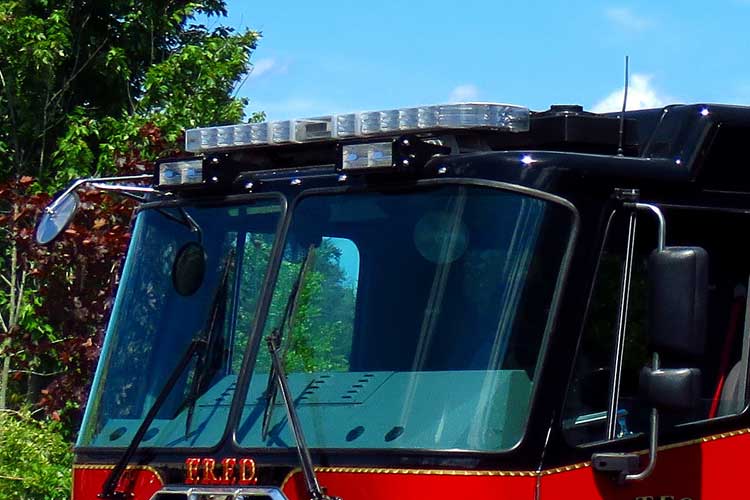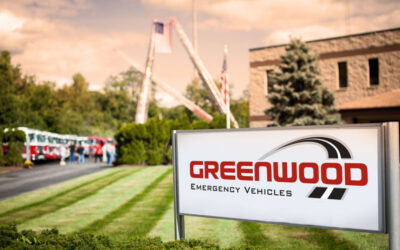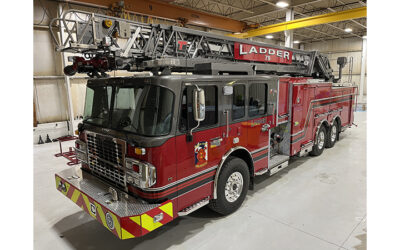By Bill Adams
Mentioning warning lights and National Fire Protection Association (NFPA 1901) Standard for Automotive Fire Apparatus in the same sentence might elicit emotional and occasional irrational statements from firefighters, the NFPA safety gurus (not a derogatory term), and some light manufacturers. The volatility of the topic of possibly changing an existing NFPA 1901 warning light requirement warrants sane and rational discussion.
Water-cooler gossip and chit chat in the fire service and industry indicated a movement to offer, or require, dimmable warning lights on fire apparatus—an interesting topic. My dictionary doesn’t recognize dimmable. Online queries say a light’s brightness is lessened when dimmed. My inquiries show there’s a crusade (my term) to make changes in NFPA 1901 to allow two settings or modes for warning lights when a rig is the blocking the right of way—one for daytime and one for nighttime. Presently, the standard has two warning light modes: one for calling for the right of way (when responding) and one for blocking the right of way (when stopped in a traffic lane), both irrespective of the time of day.
Most articles in The Rig are based on factual and technical data. This one isn’t. It is based solely on my personal opinion. Warning light manufacturers and the NFPA were not solicited for commentary. The NFPA has a well-established method of submitting modifications and making public comments regarding its standards. I have personally used the method in the past. It works well. It is not in question and is oft referred to herein. It should be noted that the folks currently on the NFPA committees and those who work closely with them are very tight-lipped about inner committee workings. I’ve always wondered why.
When a change, addition, or deletion (AKA modification) is proposed to an existing standard, it is called a “Public Input.” To its credit, the NFPA addresses every Public Input in writing in its version of a public forum. Modifications are obviously made because someone feels something in the standard does not work, or something should be added or modified to make it work better. They are admirable intentions. As mentioned in Meeting the Intent of NFPA 1901, NFPA 1901’s objective is to specify reliable, safe, and functional fire apparatus. There is no argument there.
The NFPA’s Public Input form has a place for submitters to provide a “Statement of Problem and Substantiation for Public Input.” Plainly put, the submitter identifies a problem, offers a solution to mitigate it, and is given the opportunity to justify both. Questioning the validity of a submitter’s claim of a problem is not being disingenuous. The portrayed problem may require in-depth analysis so all parties understand it. Asking to justify the method proposed for mitigating the perceived problem is not being hypocritical for the same reason. Some fire service traditionalists still believe in only fixing something they think is broken. Safety gurus are inherently proactive for firefighter well-being, and some manufacturers may be accused of just wanting to sell. Getting all to play in the same sandbox for a common goal may be trying.
Advocates for the second mode setting for warning lights when blocking the right of way, especially at nighttime, have made comments similar to: The newer LED lights are too bright; too hazardous; too confusing; too irritating; too blinding; too fast; too intense; they’re the wrong color; they’re not properly synchronized, and they’re too dazzling in ambient light. The only thing not claimed is they cause dandruff in bald people and blindness in bats.
Admittedly, some have valid concerns with LEDs. However, I believe the reasonings verbalized and what I’ve seen written so far is opinion-based. It’s all subjective, not objective. I haven’t seen substantiating scientific data or independent testing corroborating any of the preceding comments. If you cannot define how something is broken, how can you propose to fix it?
Some second-mode advocates seize upon the emotional life safety aspect of stationary apparatus being rammed with firefighters being grievously injured. I have empathy for all fire service injuries and would never denigrate a firefighter being hurt. All injuries should be prevented. It also must be acknowledged that occurrences may happen beyond anyone’s control such as unexpected mechanical failures, accidents, explosions, assaults, and defective equipment. None can justify a resulting injury nor compensate for the loss of those participating in one of the most dangerous occupations.
Cherry picking statistics to justify dimming warning lights in the blocking mode is borderline deceitful. Using fictitious figures in an equally fictitious example: Stating fire apparatus have been involved in say 10,000 accidents per year is mind boggling and certainly grounds for doing something to prevent them. I question the accuracy of such figures. Have all those accidents occurred when apparatus have been in the blocking mode? Accidents do occur when responding to alarms, when returning to quarters, and when operating on the roadways in a nonemergency mode. Such incidents have nothing to do with warning lights in the blocking mode and, as such, those statistics are irrelevant and misleading. Apparatus being struck parked in the blocking mode may only account for a small percentage of the total accidents. Nobody has proven it either way.
Quoting statistics of firefighter fatalities and injuries that have occurred in the blocking mode can also be distorted, perhaps for emotional value. Another fictious example: Say that last year nine firefighters were injured, and some grievously so, in incidents in the blocking mode. That should justifiably shock the fire service. Substantiating the emotional impact could be saying that 10 years ago only a half dozen injuries occurred with apparatus in the same blocking mode. Safety gurus may say a 50 percent increase in injuries demands that “something” must be done. Any increase in injuries deserves factual investigation. But, claiming it’s the fault of warning lights may be jumping to a faulty conclusion. Perhaps the LED warning lights are an easy target because they’re so bright.
The fictious example continues: Ten years ago, fire departments responded to 300 incidents where, in the blocking mode, those half dozen injuries occurred, meaning that at two percent of the incidents a firefighter was injured. Last year, the departments responded to 600 incidents where, in the blocking mode, the nine firefighters were hurt, meaning that firefighters were injured at 1½ percent of the incidents. There is a 25 percent reduction in the injury rate from 10 years ago! Some two-mode proponents may not present the 25 percent reduction because it may not fit a narrative. They may just correctly state injuries were up by 50 percent in 10 years and purposefully not mention the 100 percent increase in responses and the 25 percent decline in the injury rate. Misrepresentation of facts and figures, whether willfully or not, can be done by both sides. I haven’t seen any figures or substantiation for injuries and injury rates in relation to responses. I don’t believe enough factual data has been accumulated about accidents and injuries when apparatus are in the blocking mode to say that LED lights have caused them.
I interpret that most collisions with apparatus blocking the right of way have occurred on roads such as expressways, interstates, and divided highways where traffic moves at high rates of speeds. Has that been investigated and analyzed? It could be a major factor in deciding whether or not every fire truck in the United States is required to have, or be offered with, dimmable warning lights. The need for a second warning light mode for blocking the right of way may be a localized requirement and not a nationwide necessity. Perhaps only the departments that need it should pay for it. That sounds fair.
Supposedly, the Public Input period for NFPA 1901 changes is closed. After the first draft of proposed changes is voted on by the NFPA committee(s), it will be available for public comment on or about February 27, 2019. The NFPA only allows 10 weeks to comment on the first draft. Disclaimer: I personally don’t like some of the LED lighting on fire apparatus but believe any change to the NFPA 1901 standard should be justified by factual data and provable statistics. I have a lot more to say in Part 2.
BILL ADAMS is a member of the Fire Apparatus & Emergency Equipment Editorial Advisory Board, a former fire apparatus salesman, and a past chief of the East Rochester (NY) Fire Department. He has 50 years of experience in the volunteer fire service.






